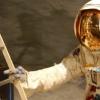nasa
 |
NASA’s Climate Change Contest Looking for Data Apps Can a citizen scientist help solve climate change or help us better understand it? To encourage developers to come up with new ideas, NASA and the USGs, a scientific agency that researches the Earth’s conditions and problems, announced a contest with more than $35,000 in prizes. |
|
 |
New NASA Laser Probe Will 3D Map Carbon in Earth’s Forests Scientists have long wrestled with the question of how to quantify the impact of deforestation. They are hoping new technology being developed for the International Space Station will provide valuable hard data about the impact trees have on carbon levels in the atmosphere. |
|
 |
NASA SPHERES Sending Google Technology to Space NASA and space exploration just became more like something out of the realm of science fiction—and Google played a role in it. Beginning in October, NASA's satellites known as SPHERES will begin to incorporate Google’s Project Tango technology in an effort to help NASA increase overall efficiency. |
|
 |
Best Selfie Ever: NASA's Global Earth Day NASA had an ambitious event this year to create a “global selfie,” a crowd-sourced mosaic image that would resemble Earth as it appeared from space on Earth Day—and more than 50,000 people responded. The result is a zoomable 3.2 gigapixel image built with more than 36,000 individual images. |
|
 |
NASA Releases Software Code for Rockets to Robotics and More Over the years, NASA’s aerospace research and development has launched many well-known technologies that we use here on Earth, as well as in space. NASA recently released an online software catalog listing more than a thousand computer codes that can be accessed and adopted at no charge. |
|
 |
New FINDER Technology Can Detect a Heartbeat Buried in Rubble New radar-based technology developed by NASA’s Jet Propulsion Laboratory and the Department of Homeland Security's Science and Technology Directorate has the potential to assist rescue workers to pinpoint the human heartbeat of victims buried in rubble—which can potentially save a lot of lives. |
|
 |
How Exhaustive Testing Ensured a Successful Voyage for the Mars Rover Bonnie Bailey writes on the software testing that took place to ensure that NASA's Curiosity rover would have a successful voyage to Mars. NASA's Mars Science Laboratory handled the myriad risks through well-planned software architecture, tight coding standards, and exhaustive testing. |
|
 |
Why Teams Are Responsible for Successful Product Delivery Some believe that a large investment of time and money in requirements gathering and process oversight will lead to a more reliable or safer software product. But is that really the case? Steve Vaughn writes that in agile the team members are responsible for the successful delivery of their product. |




